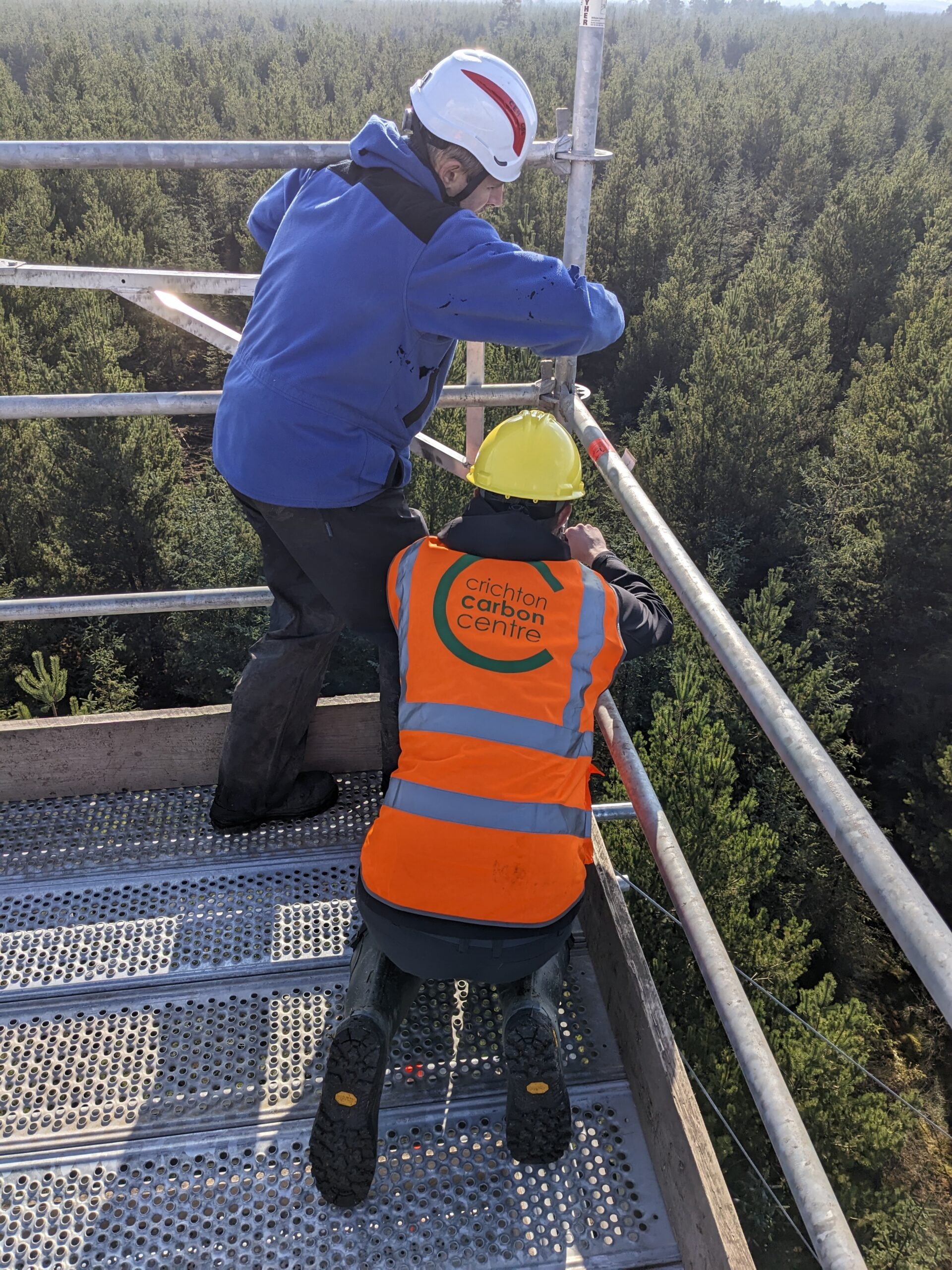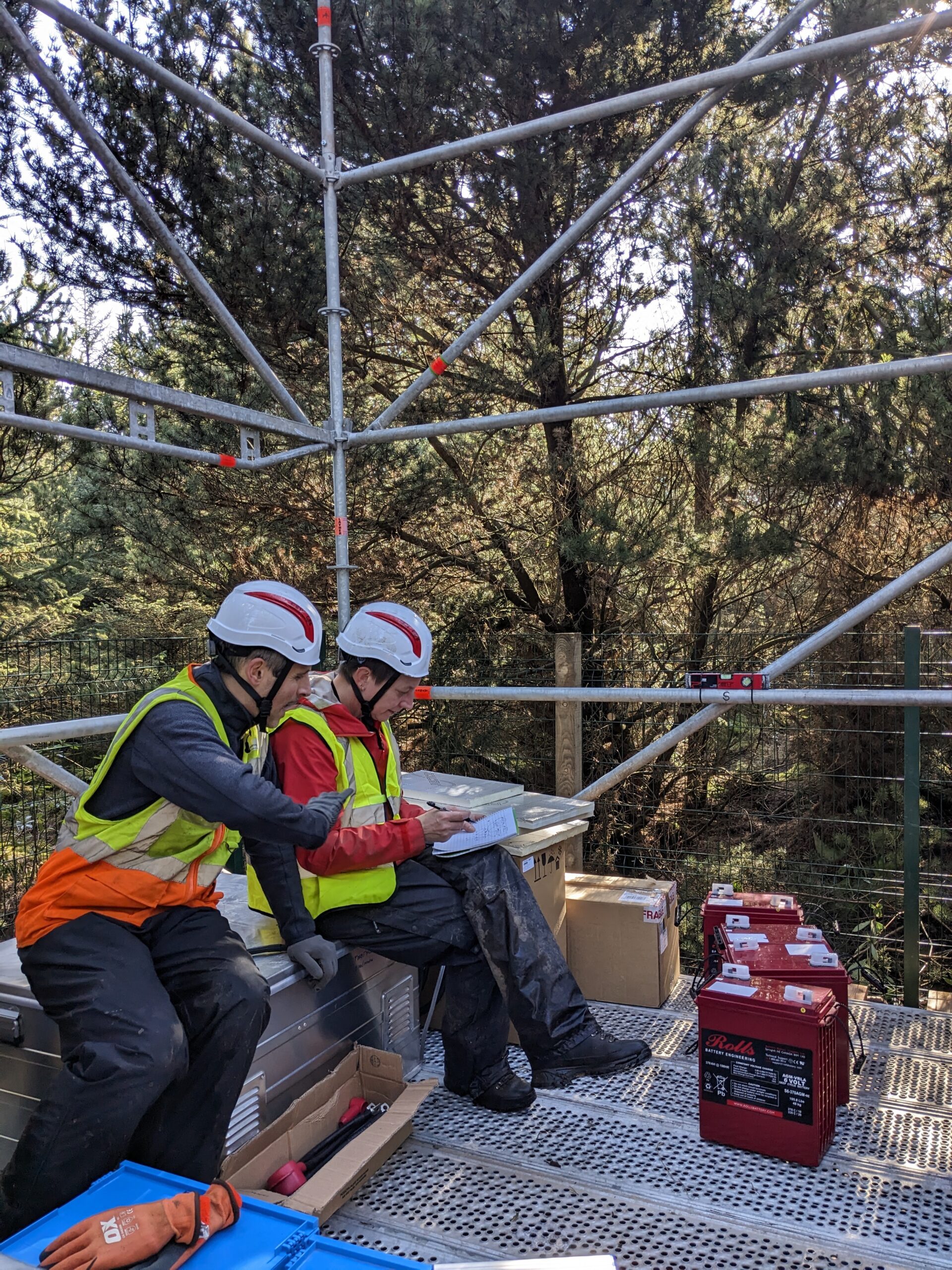Case study
Dulas installs first-ever flux tower in the South of Scotland
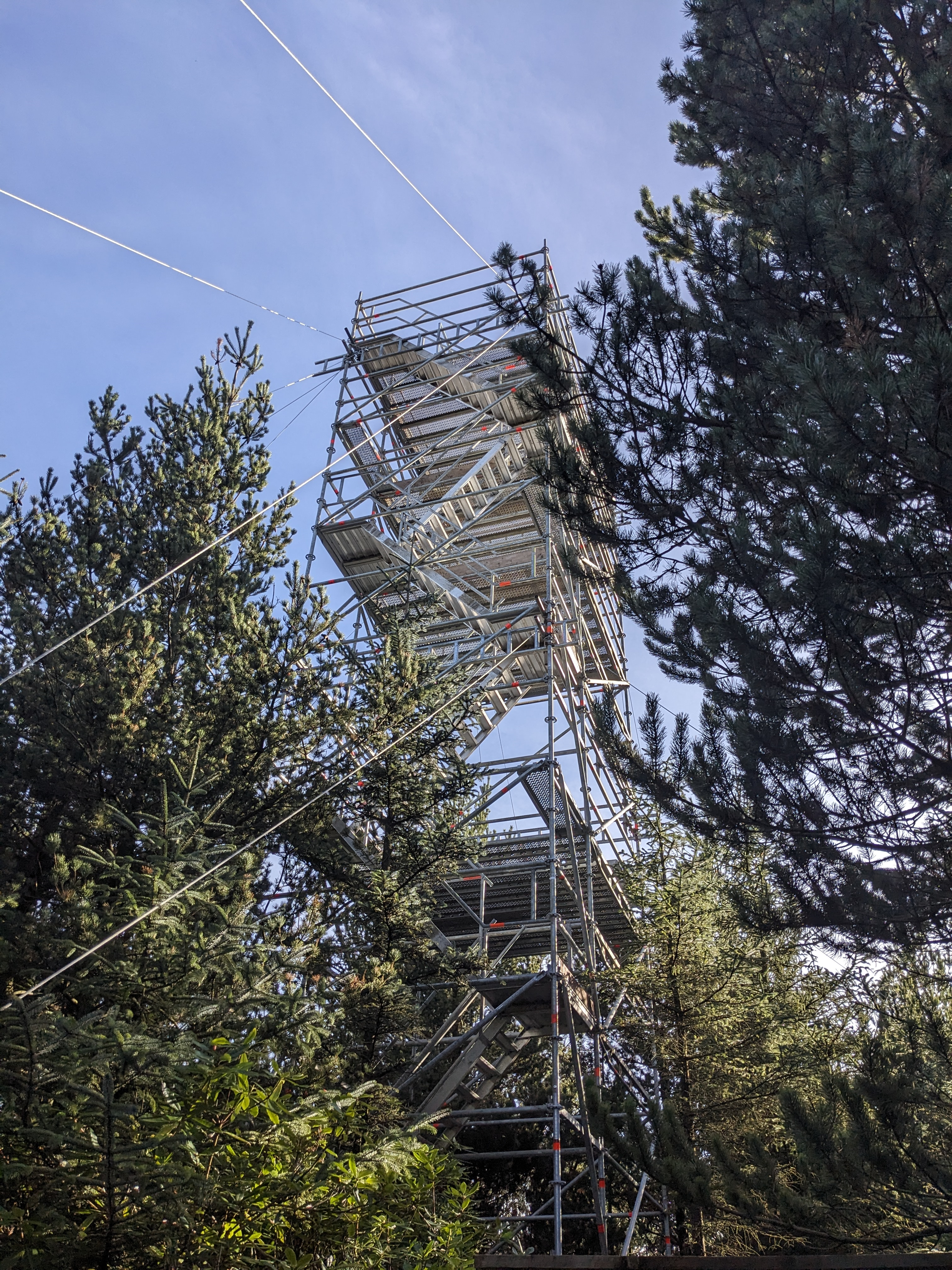
The flux tower is a 14-metre scaffold structure sited on second generation forestry near Dumfries. The purpose of the tower is to measure carbon dioxide and methane above the canopy of a maturing second rotation Sitka spruce and lodgepole pine conifer plantation on deep peat and how emissions change as the land is restored back to open peatland. Supported by NatureScot Peatland ACTION and led by The Crichton Carbon Centre this installation will form part of a network of flux towers in Scotland. The tower was installed in early February 2024 by Dulas’s wind monitoring team, who have vast experience of installing met masts on peatland.
Partners
Crichton Carbon Centre (project lead)
NatureScot Peatland ACTION (lead funder)
Forestry and Land Scotland (site owner)
The UK Centre for Ecology & Hydrology (installation of monitoring equipment, scientific research)
The James Hutton Institute (scientific research)
Supporting partners
Dulas (installation contractor)
South Of Scotland Enterprise (funder)
Craig Williamson (fencer)
Clark Scaffolding (scaffolding contractor)
Layher training
The flux tower is designed by a company called Layher. Prior to the installation, the Dulas site crew attended a Layher training course, to become certified Layher tower installers.
Making the tower fit for purpose
Before the installation could commence, Dulas had to ensure the flux tower was fit for purpose. The UK Centre of Ecology and Hydrology bought the tower ten years ago, and it was stored in a barn in England. On inspection, it was noted that the tower was in good condition, but some parts were missing. Dulas sourced the missing components and transported the tower to the site near Dumfries in Scotland. The tower is leased to the Crichton Carbon Centre – an environmental not-for-profit organisation based in Dumfries and Galloway, specialising in peatland restoration and sustainable land-use – who are leading on the flux tower research project, the first of its kind in the South of Scotland.
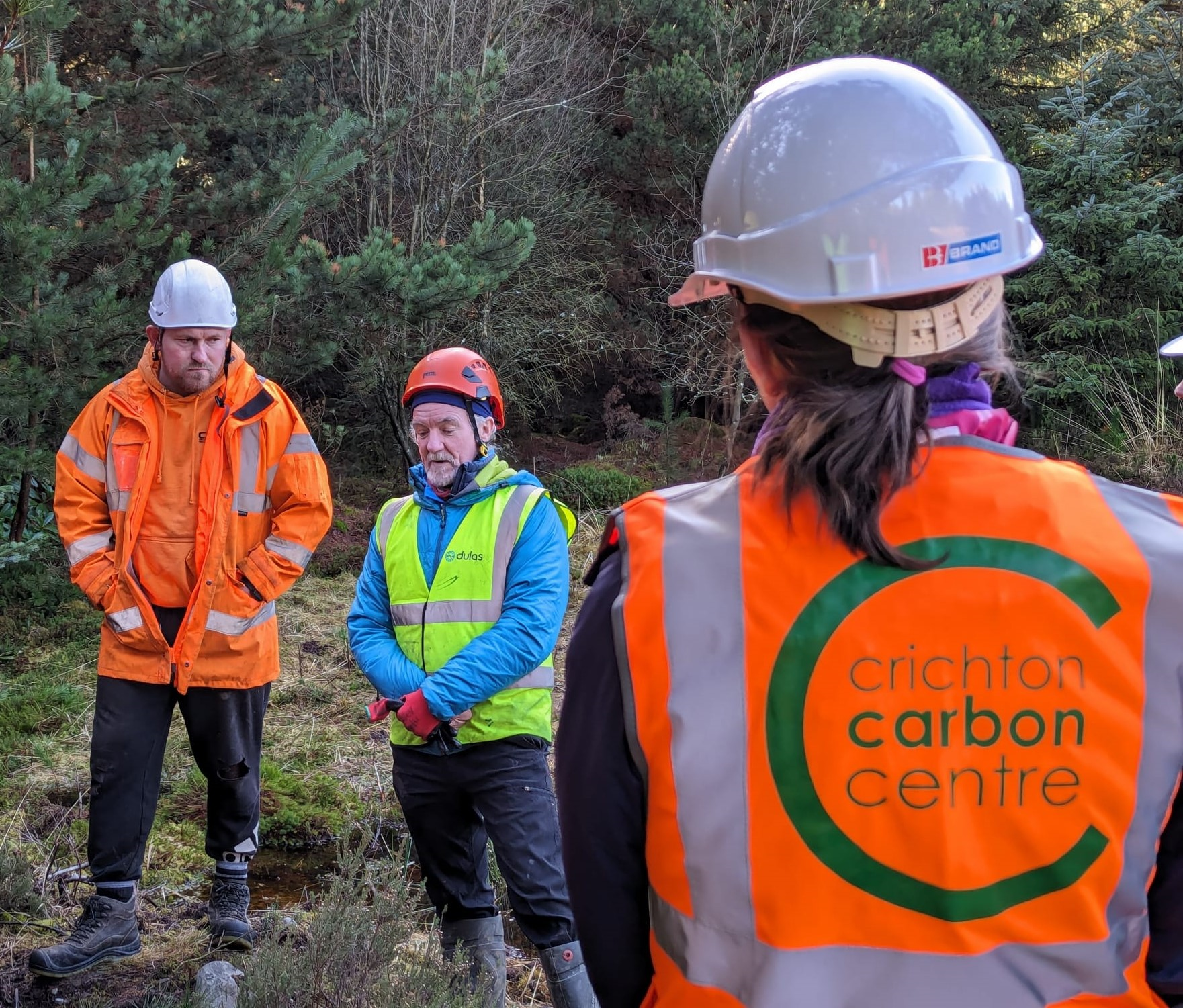
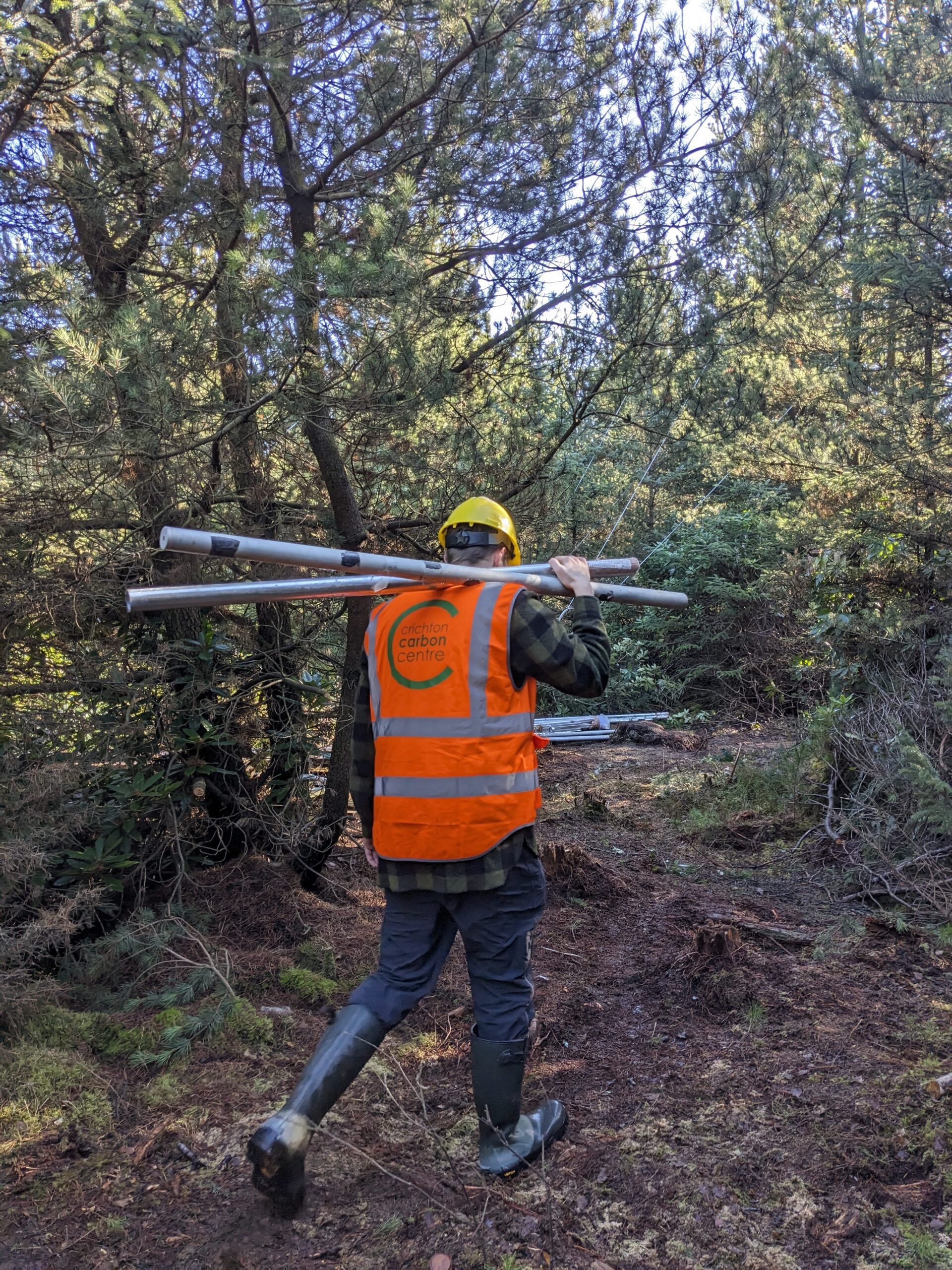
Adapting to sensitive terrain
One of the biggest constraints was the sensitive nature of this project. When installing meteorological masts (met masts), our site crew use heavy machinery to transport the mast components to site, and a mechanical winch to lift the parts for the met mast. With this installation, none of this was possible. As the site forms part of a research project, no disturbance to the ground was allowed. A small number of trees were felled to enable equipment to be carried to site, from a nearby forestry track, approximately thirty meters away.
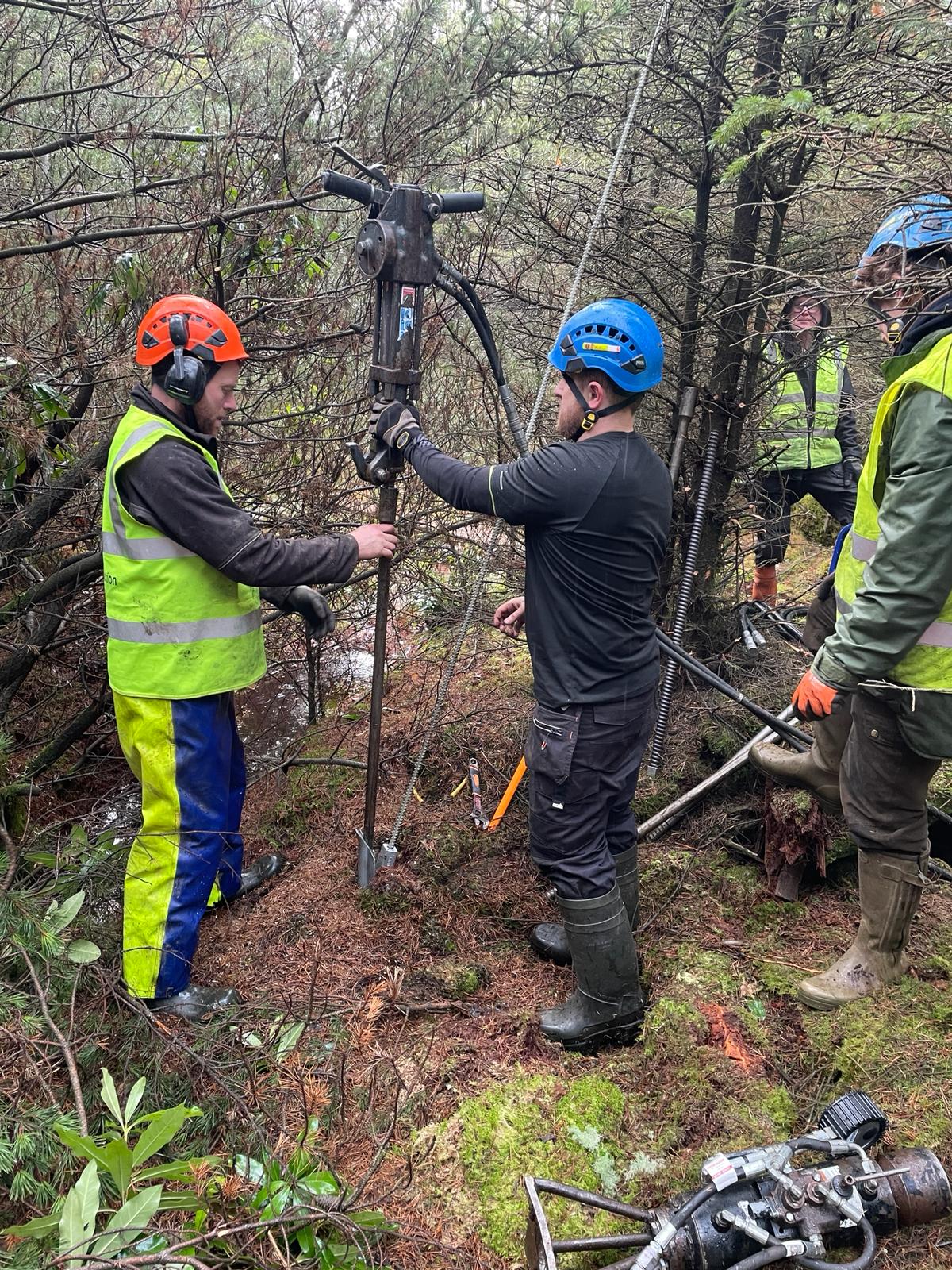
Design
After an initial site survey in April 2023, Dulas produced a design for the platform. This was purely based on surface loading, a method used on our met mast installations (the wetter the ground and the heavier the mast, the more surface area over the ground is used to spread the load of the met mast.) The design was basic but believed to be sufficient. It consisted of a geotextile membrane topped with gravel, which would produce a level area for four individual foundation pads, onto which the tower would be constructed. The guywires from the tower would be attached to Manta Ray anchors. These anchors are driven into the ground using a hydraulic power pack and a jackhammer, where no excavation is necessary.
Changing conditions
When the Dulas crew arrived on site in January 2024, the ground conditions had changed drastically. The ground was now waterlogged, and the surface was found to be much softer than during previous visits. The low resistance would not support the current design of the foundations for the tower.
A new solution was required quickly. Due to funding, the tower would have to be installed by the end of March, as planned.
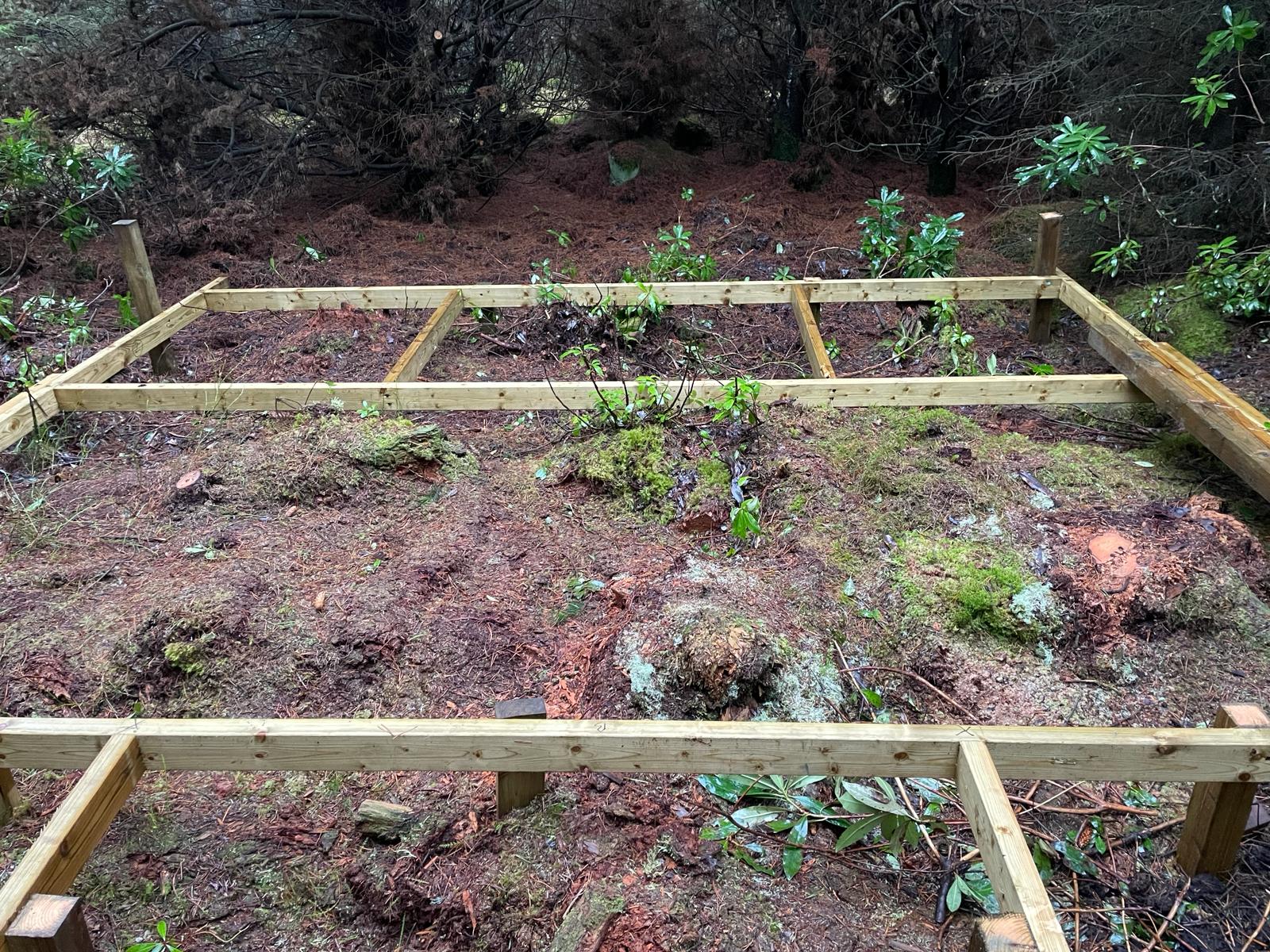
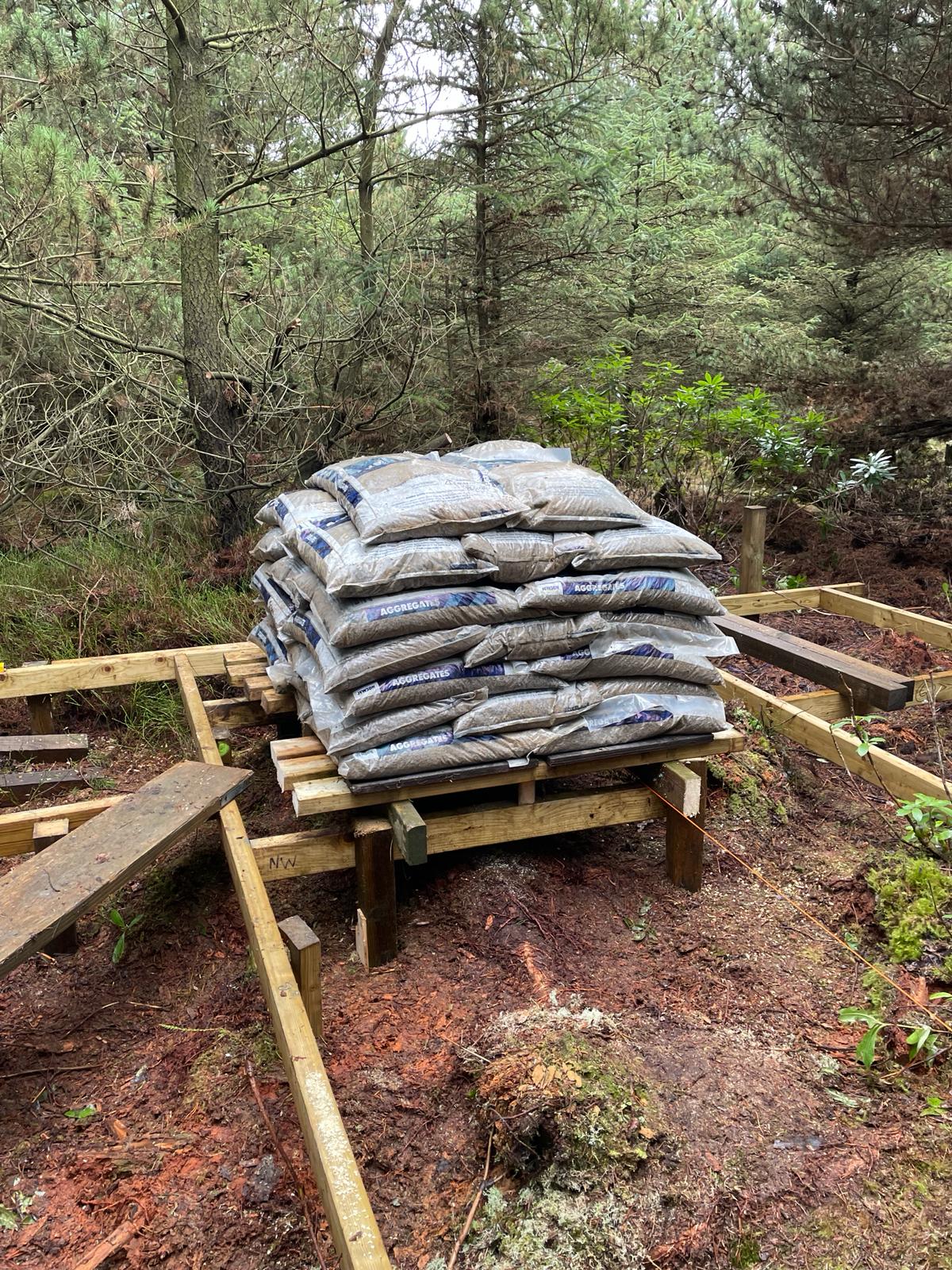
Surcharging the peat
While the Dulas Project Manager went back to the drawing board, staff from the Crichton Carbon Centre conducted peat probing on the site, to better understand the peat composition. It was concluded that the peat was 9m deep in total but offered significant resistance 4m down.
To further understand the loading capacity of the peat, Dulas conducted a site experiment. Four posts were driven into the ground by hand, as far as it was possible. The depth varied between 3-3.5m. A timber frame was constructed on top of the four posts. A tonne of gravel was added to the top of the timber frame. Reference points were added to the corners of the timber frame, so we could monitor how much the structure would sink during and after the loading. A week later, it was noted that the structure had sunk by 19mm. This gave us the information we needed to implement a new design.
A new design
While the Dulas project manager was designing the new platform, new information emerged regarding the longevity of the tower. Originally, the tower was meant to come down after up to 15 years. This has now been shortened to less than 10 years. The height of the tower was also shortened from 25m to 14m. This made our work easier, as timbers could be used for the platform instead of concrete.
To make the platform stable and secure, the first step was to drive 75 timber posts into the ground (75×75 mm), to a depth of between 3.5-4m. A timber platform was then constructed on top, and pad foundations from recycled plastic were added to the ground surface to help support the load. Manta Ray anchors were driven 6m into the ground, to support the guywires from the tower.

A
Pad foundation with timber packer
B
75 piles driven into peat
C
100 x 50mm frame installed during initial phase
D
150 x 50mm timber ‘stage’
E
1000 x 1000 x 25mm load-bearing pad
F
500 x 500 x 50mm kedel foundation pad
G
Adjustable jack on 150 x 150mm base
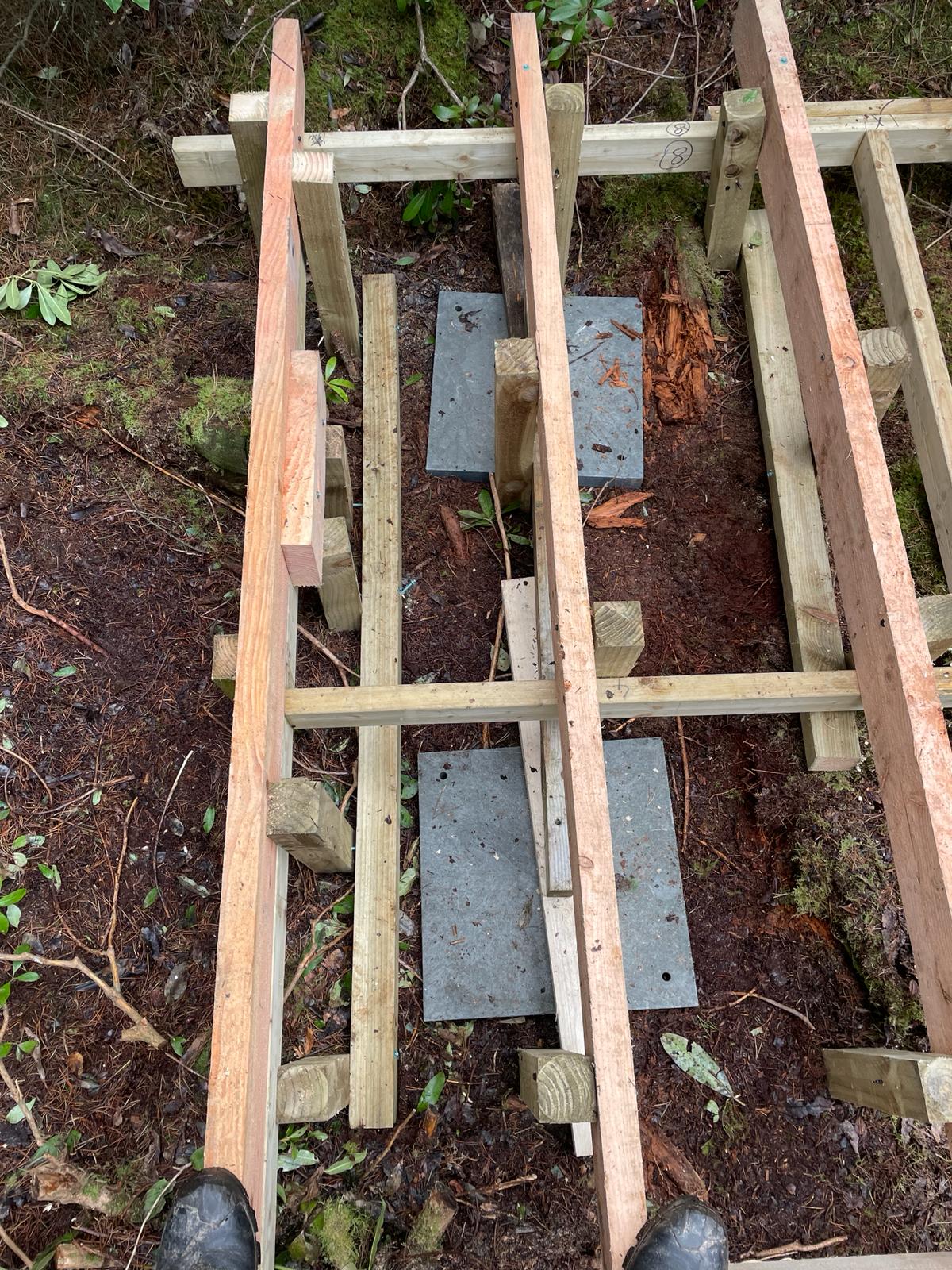

The Larch timbers were sourced near Dulas’s headquarters in Machynlleth. Larch wood has a natural resistance to both water and decay.

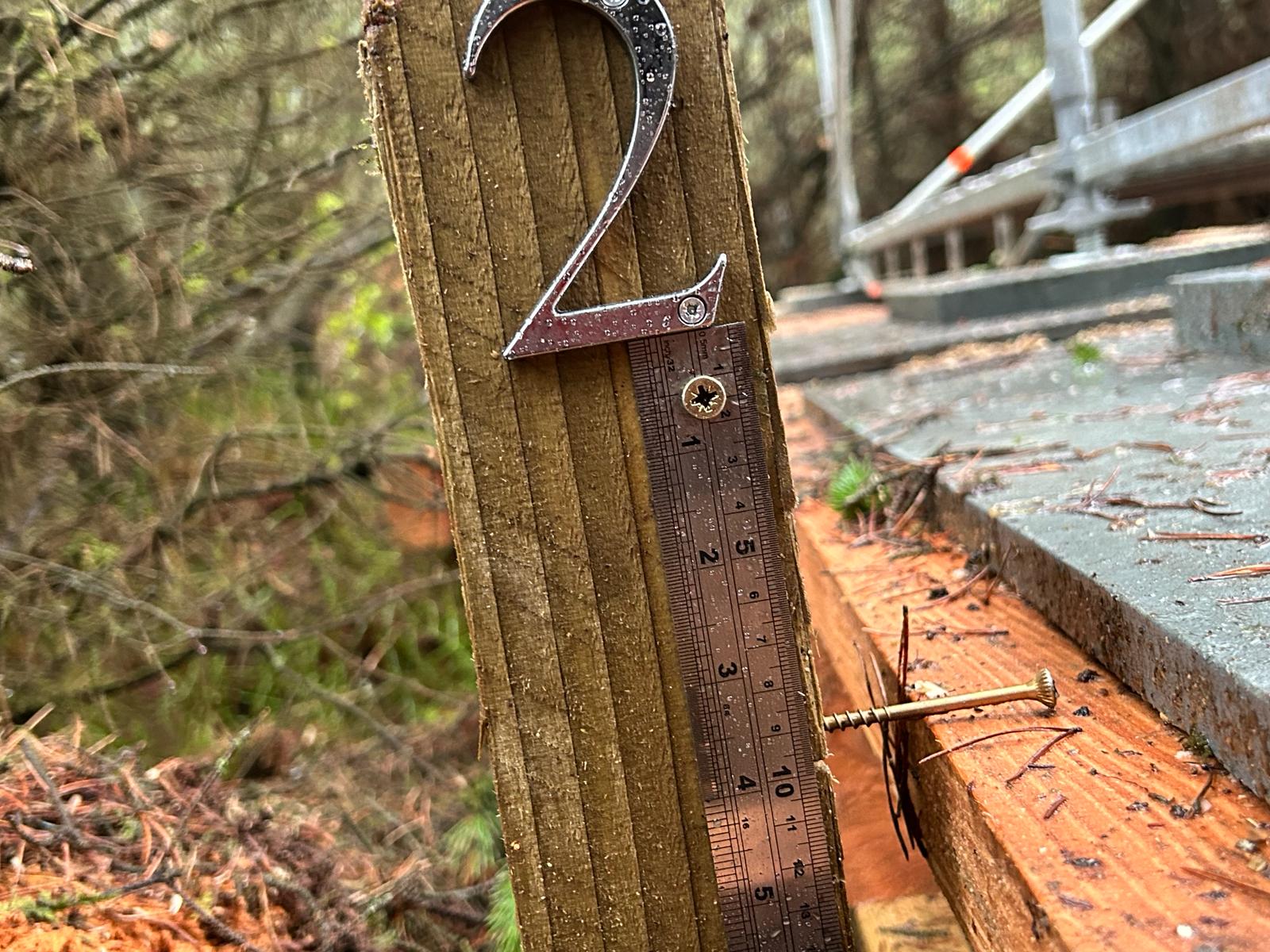
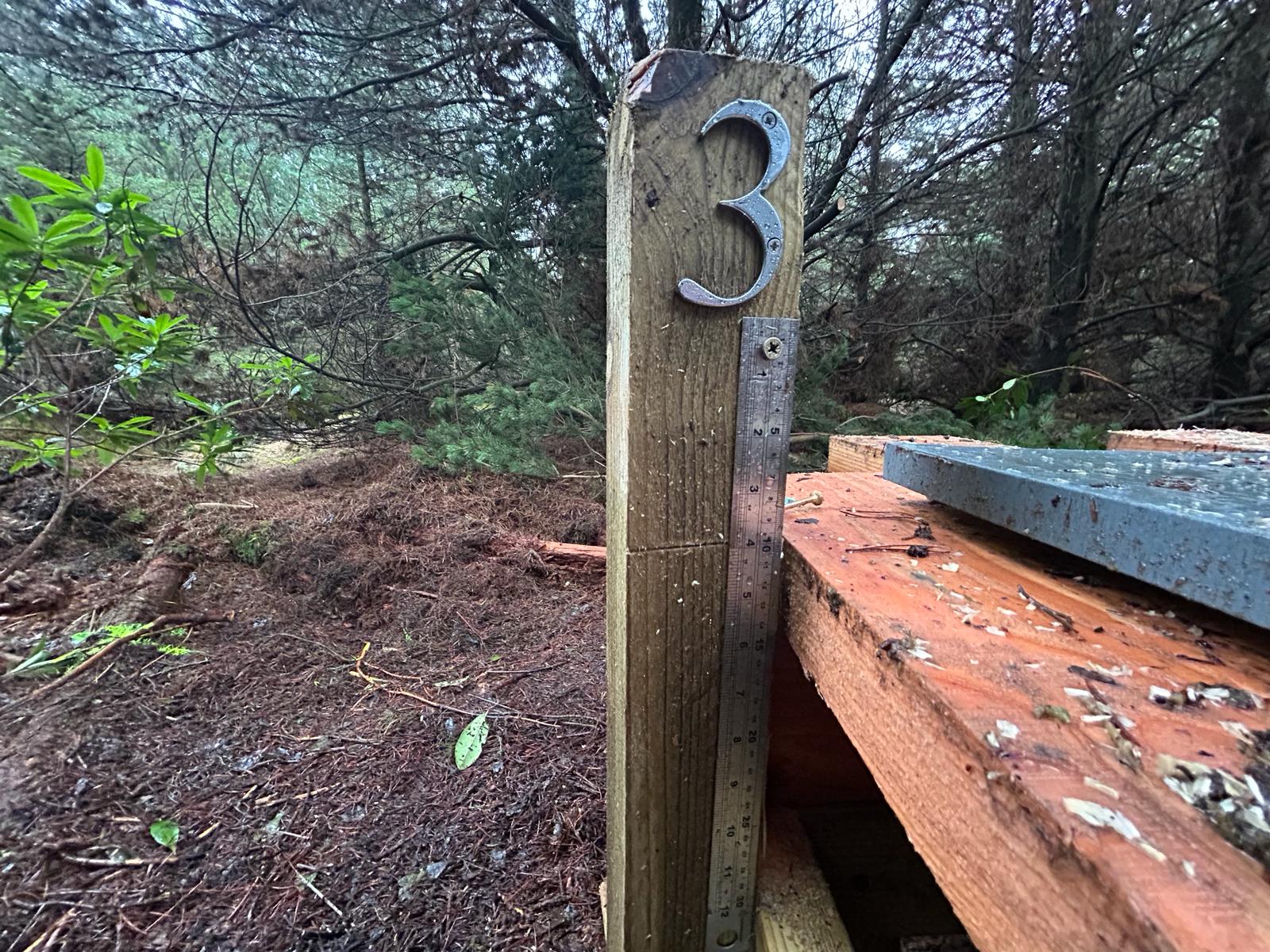
Reference points were added to the platform, to make it easy to monitor how far the structure sinks into the peat.
Building the tower
As no mechanical machinery was allowed on site, all tower components had to be carried to the site by hand from a nearby forestry track. The tower, timber and other equipment amounted to at least 6.5 tonnes. Despite this, the Dulas crew managed to complete building the platform and tower within 10 days.
To ensure the tower is safe to climb, spirit levels were attached to the fences of the tower, to inform the users if it is leaning. Reference points were also added to the corners of the platform.
A health and safety induction was also provided by the Dulas team, to ensure that the tower is used safely.
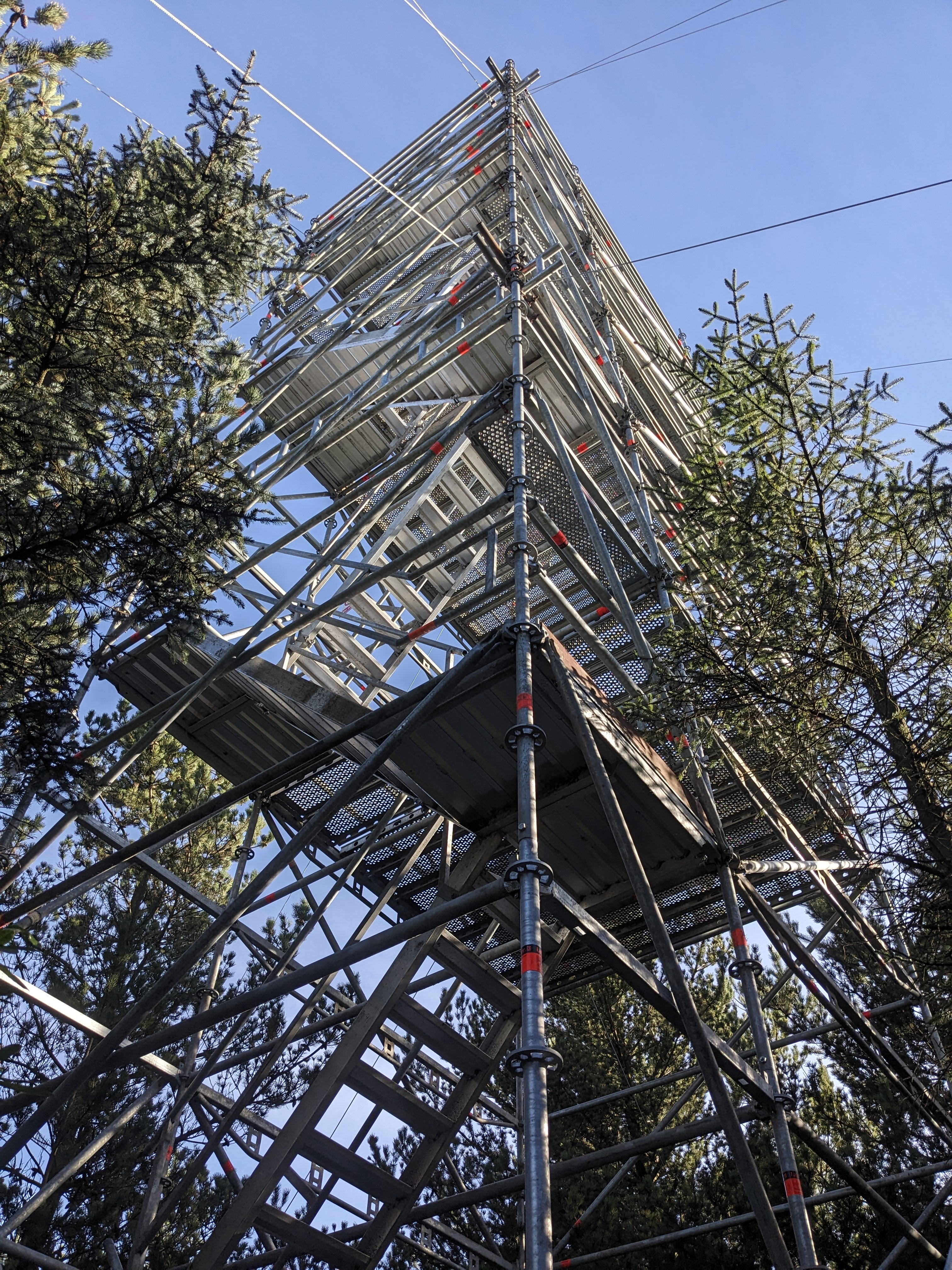
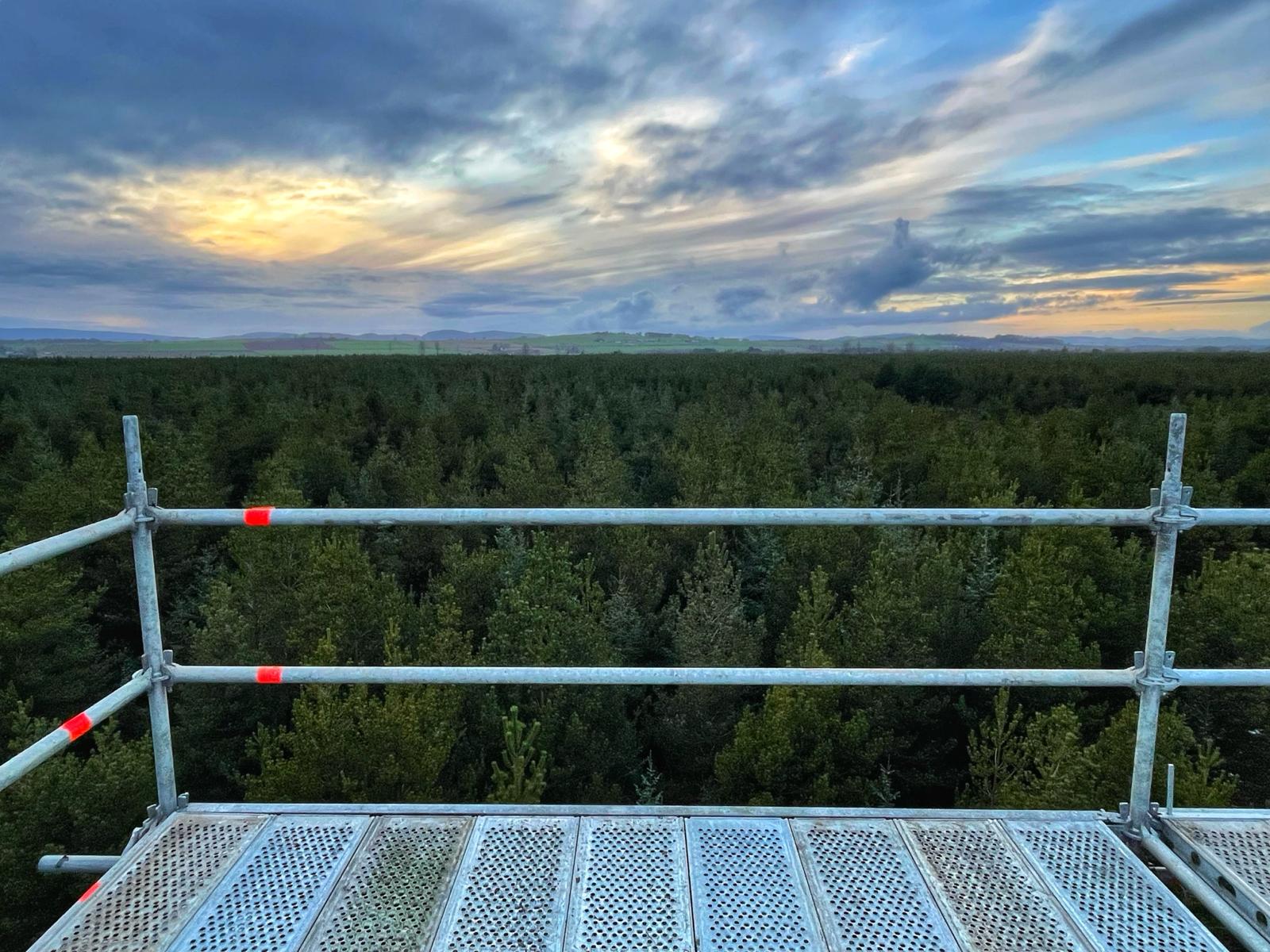
Health and safety is paramount
Health and safety is of vital importance, particularly when working at height. Dulas provided a health and safety induction to those that would need to regularly climb the tower to obtain measurement data. To ensure the tower is safe to climb, spirit levels were installed to the fences of the tower, and before ascending, users were instructed to carefully check these reference points on every corner of the platform.
“
Building a 4.5 tonne flux tower on soggy peat, with minimal disturbance to the ground, is no mean feat! The changing ground conditions meant that we had to change our design halfway through the project, but despite this, we completed the build ahead of schedule. I feel immensely proud of my team who managed to come up with a new, safe design, and complete the build with no heavy machinery involved.
Jeremy Brett
Project Manager
“
This project has been an ambition of the Crichton Carbon Centre for many years. Measuring greenhouse gas emissions from a range of different peatland sites is essential if we are to fully understand how we should be managing our land to reduce the impacts of climate change. Of course, we now have a very good understanding of the challenges of undertaking this kind of research! We would not have been able to get here without the work of Dulas and the knowledge and experience of the team who took on this challenge. Their attention to detail, genuine understanding and enthusiasm for what we were trying to do, along with their problem-solving skills, were essential to getting to where we are today.
Dr Emily Taylor
General Manager for the Crichton Carbon Centre, Lead partner
“
We are delighted to be funding such an important and ground-breaking addition to Scotland’s flux tower network. The data will help inform the Peatland ACTION Programme on the effectiveness of forest-to-bog restoration and how to best manage existing peatland carbon stores in the future. Installing the tower is a major milestone and follows years of close collaboration across the organisations involved. Dulas engaged closely with us to meet our requirements and were flexible and adaptive when plans needed to change. Communication was good throughout the project and all work was completed on schedule.”
Chris Boyce
Lead funder, NatureScot Peatland ACTION Data & Evidence Team
To find out more about this flux tower and monitoring of greenhouse gases from peat, see:
About Dulas
As one of the UK’s leading wind monitoring service providers, Dulas has been installing and maintaining met masts since 1988. We provide a range of turnkey services for traditional met masts and LiDAR and SoDAR wind measurement devices across the UK and internationally.
Our wind consultancy services include site-finding, feasibility studies, planning, Environmental Impact Assessment and due diligence, and we work with the major wind utilities across the UK and Ireland. We are accredited members of the Institute of Environmental Management and Assessment (IEMA).
About NatureScot Peatland ACTION
Peatland ACTION is a Scottish Government funded initiative focused on the restoration of damaged peatlands in Scotland for the many benefits to both people and nature. Funding comes through the Scottish Government’s Climate Change Plan to net zero to restore 250,000 hectares by 2030. The Peatland ACTION programme is delivered through a network of five partner organisations including NatureScot – Scotland’s nature agency.
About the Crichton Carbon Centre
The Crichton Carbon Centre is an independent, environmental not-for-profit organisation base in Dumfries and Galloway. Established in 2007 the Crichton Carbon Centre specialises in peatland restoration, carbon management, sustainable land-use and environmental education. The Crichton Carbon Centre exchanges their specialist knowledge and practical experiences with nurtured partnerships and communities to catalyse change and bring climate resilience.
Website: https://www.carboncentre.org/

Jeremy Brett
Project Manager
For further information, feel free to get in touch.
Email: info@dulas.org.uk
Renewables Tel: 01654 705 000
Photos: Dulas and Crichton Carbon Centre



